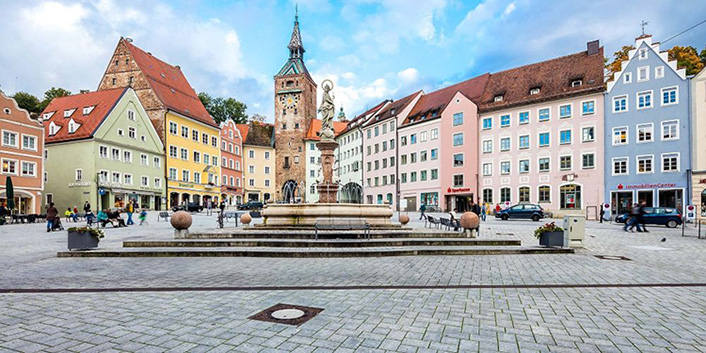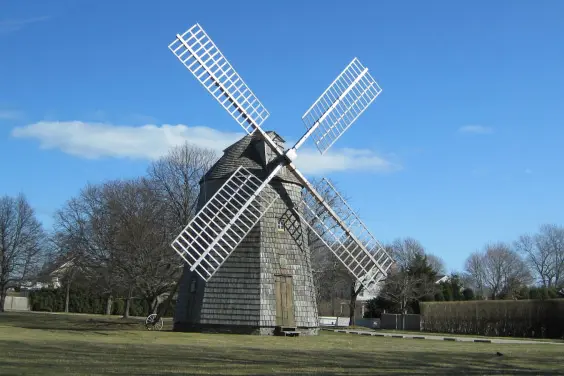Bus from LANDSBERG AM LECH to POLKOWICE. Current connections
LANDSBERG AM LECH

Landsberg am Lech is a city in southern Germany, located in Bavaria, on the Lech River, about 50 km west of Munich. It is a historic city that played an important role in both medieval and modern German history.
Landsberg am Lech is a medieval town that has retained much of its historic buildings. Highlights include:
1. Old Town - With its preserved medieval streets, churches and townhouses, Landsberg's Old Town has a unique charm. Take a walk through the narrow streets and see the townhouses from the Renaissance and Baroque periods.
2. Landsberg Castle - The 13th century castle, which is one of the focal points of the city. The castle is an excellent example of medieval martial architecture.
3. Church of St. John the Baptist - An impressive church from the 15th century, which is one of the most important religious monuments in the city. It has a beautiful interior with works of art from various historical periods.
4. Lech Tower - A medieval defense tower that is one of the symbols of the city. The tower offers a beautiful view of the surrounding countryside.
5. Landsberg Prison Monument - During World War II, Landsberg was home to a prison that held many high-ranking Nazis, including Adolf Eichmann, as well as other war criminals. Today there is a memorial on the site of the former prison to commemorate these events.
Today Landsberg am Lech is a city of about 30,000 residents that has retained much of its traditions and historical charm, but is also modernizing in terms of infrastructure and economy. The city is a popular tourist destination, especially for those interested in history and medieval architecture.
The city is also known for hosting a variety of festivals and cultural events that attract tourists and locals. In addition, Landsberg is well connected to Munich and other major cities, making it a good place to live and work, with proximity to major industrial and cultural centers.
Landsberg am Lech is a city in southern Germany, located in Bavaria, on the Lech River, about 50 km west of Munich. It is a historic city that played an important role in both medieval and modern German history.
Landsberg am Lech is a medieval town that has retained much of its historic buildings. Highlights include:
1. Old Town - With its preserved medieval streets, churches and townhouses, Landsberg's Old Town has a unique charm. Take a walk through the narrow streets and see the townhouses from the Renaissance and Baroque periods.
2. Landsberg Castle - The 13th century castle, which is one of the focal points of the city. The castle is an excellent example of medieval martial architecture.
3. Church of St. John the Baptist - An impressive church from the 15th century, which is one of the most important religious monuments in the city. It has a beautiful interior with works of art from various historical periods.
4. Lech Tower - A medieval defense tower that is one of the symbols of the city. The tower offers a beautiful view of the surrounding countryside.
5. Landsberg Prison Monument - During World War II, Landsberg was home to a prison that held many high-ranking Nazis, including Adolf Eichmann, as well as other war criminals. Today there is a memorial on the site of the former prison to commemorate these events.
Today Landsberg am Lech is a city of about 30,000 residents that has retained much of its traditions and historical charm, but is also modernizing in terms of infrastructure and economy. The city is a popular tourist destination, especially for those interested in history and medieval architecture.
The city is also known for hosting a variety of festivals and cultural events that attract tourists and locals. In addition, Landsberg is well connected to Munich and other major cities, making it a good place to live and work, with proximity to major industrial and cultural centers.
POLKOWICE

Polkowice is located in the Lower Silesian province northwest of Wroclaw. This small town has a population of more than 22,000 and is primarily famous as a so-called copper town belonging to the Legnica-Glogów Copper District. However, its history goes back much further than the years of the 19th-century industrial revolution. In 1291 Polkowice was granted a city charter, having previously been a market settlement on the trade route between Glogow and Legnica.
When visiting Polkowice, it is essential to see the well-preserved market square, full of colorful tenement houses, together with the town hall building dating back to the 18th century and the Gothic church of St. Michael the Archangel dating back to 1679. The symbol and unquestionable attraction of Polkowice is the Dutch windmill, inside of which you can learn more about the history of this Piast stronghold at the dawn of time, and from the observation deck at its top admire the panorama of the city.
An ideal place for those who want active rest in the midst of nature and greenery will be the Central Park of Fun and Leisure located in the center of Polkowice. On its territory you will find an amphitheater, a playground, a fountain or even an open-air library.
Polkowice - bus, train or own transport
Getting to Polkowice by car or bus should not be a problem, as the city lies on the S3 expressway and provincial road 331. The Polkowice PKS bus stop can be found near the historic windmill on Mlynska Street, from where numerous domestic and international bus connections depart. However, trains do not reach the town and it has no railroad station.
Polkowice is located in the Lower Silesian province northwest of Wroclaw. This small town has a population of more than 22,000 and is primarily famous as a so-called copper town belonging to the Legnica-Glogów Copper District. However, its history goes back much further than the years of the 19th-century industrial revolution. In 1291 Polkowice was granted a city charter, having previously been a market settlement on the trade route between Glogow and Legnica.
When visiting Polkowice, it is essential to see the well-preserved market square, full of colorful tenement houses, together with the town hall building dating back to the 18th century and the Gothic church of St. Michael the Archangel dating back to 1679. The symbol and unquestionable attraction of Polkowice is the Dutch windmill, inside of which you can learn more about the history of this Piast stronghold at the dawn of time, and from the observation deck at its top admire the panorama of the city.
An ideal place for those who want active rest in the midst of nature and greenery will be the Central Park of Fun and Leisure located in the center of Polkowice. On its territory you will find an amphitheater, a playground, a fountain or even an open-air library.
Polkowice - bus, train or own transport
Getting to Polkowice by car or bus should not be a problem, as the city lies on the S3 expressway and provincial road 331. The Polkowice PKS bus stop can be found near the historic windmill on Mlynska Street, from where numerous domestic and international bus connections depart. However, trains do not reach the town and it has no railroad station.
© 2025 Sindbad
Technical support, assistance, payments: Sindbad IT
© 2025 Sindbad
Technical support, assistance, payments: Sindbad IT
